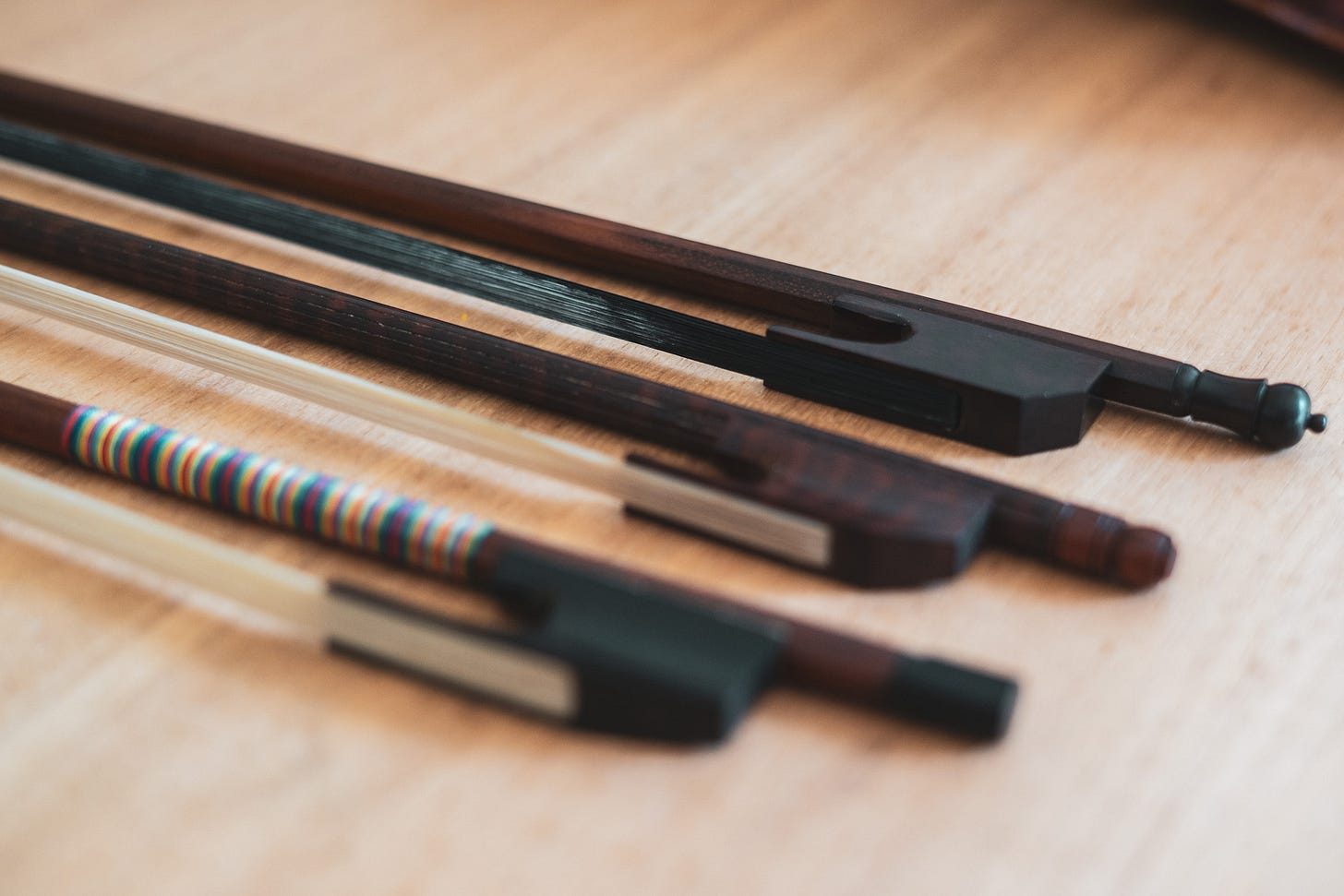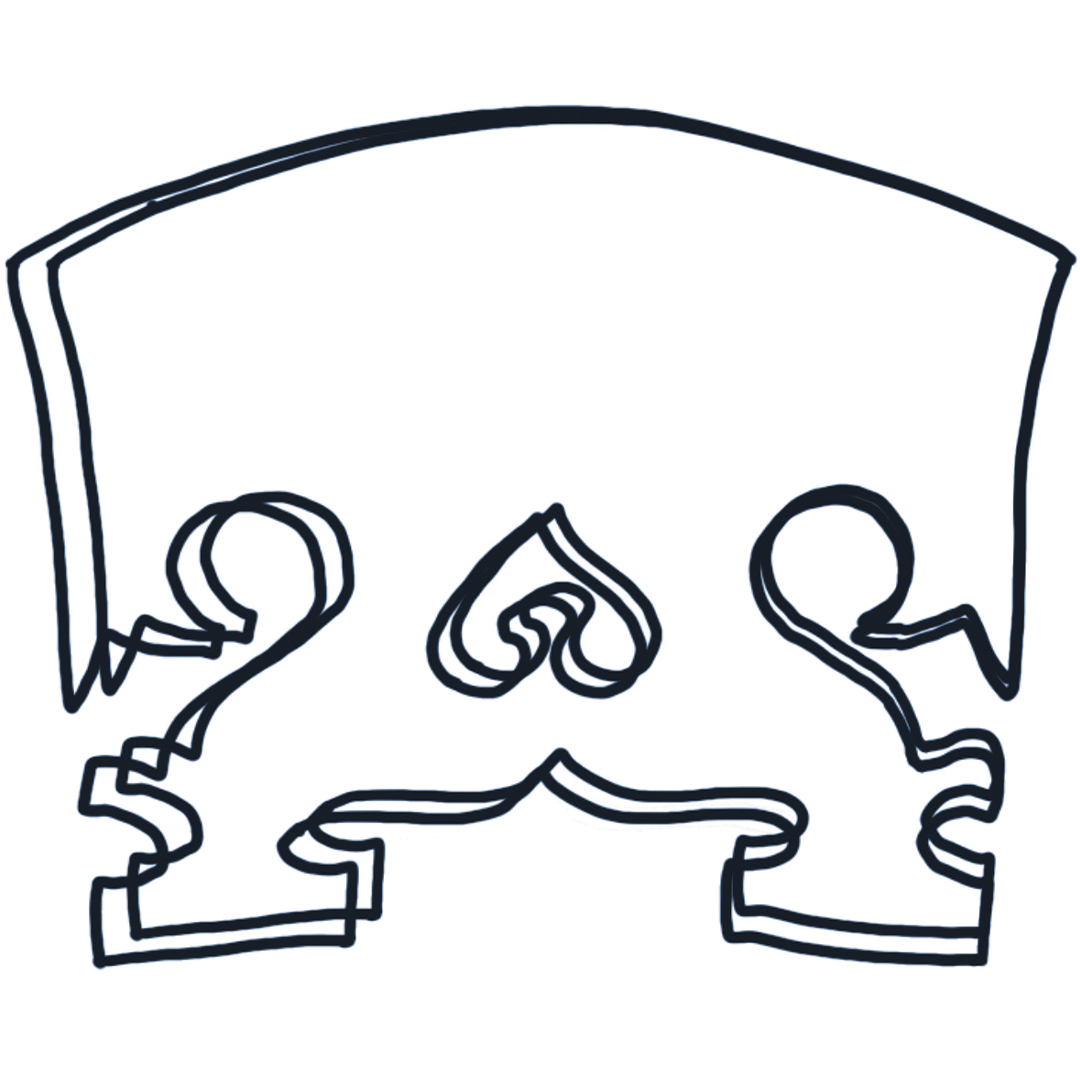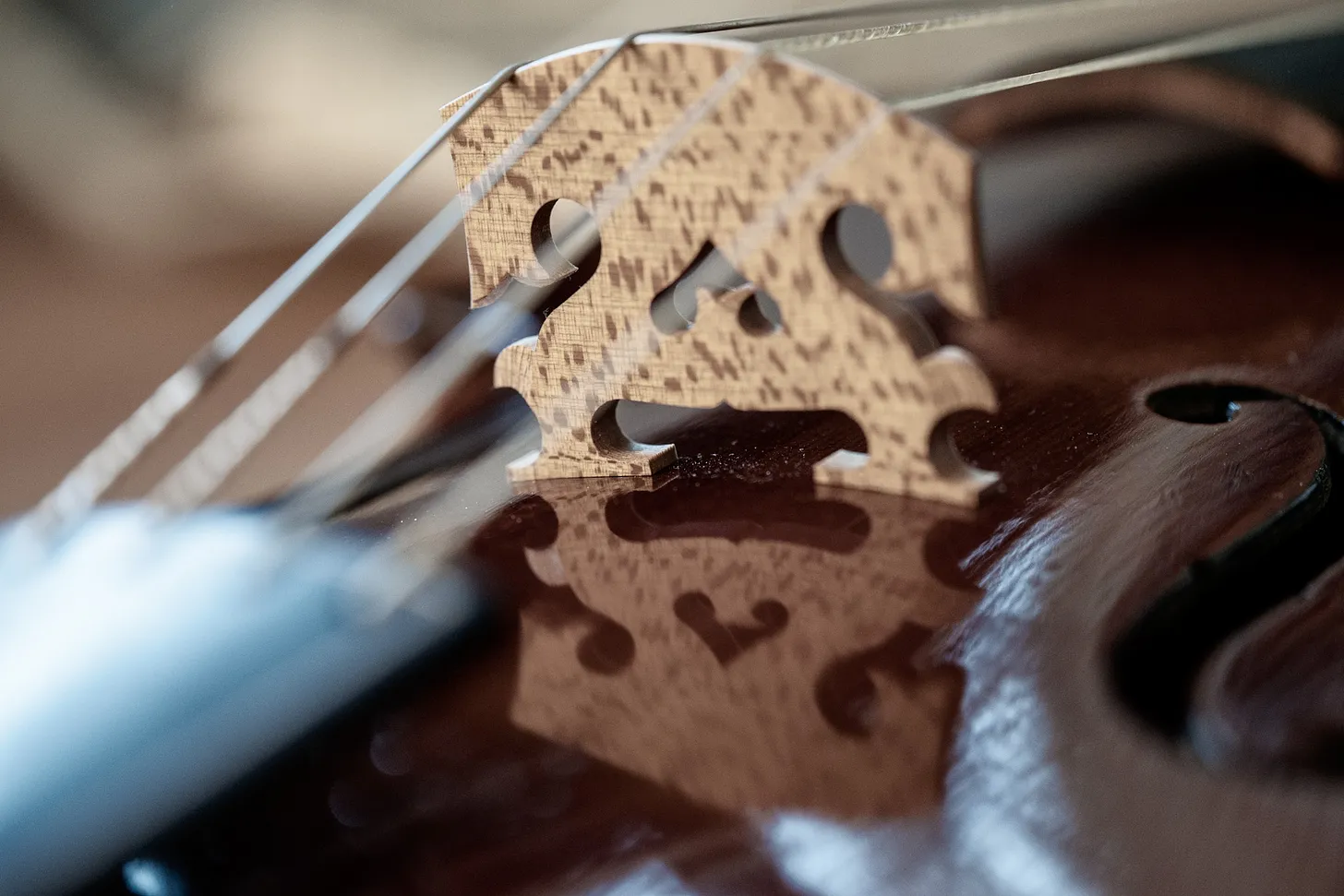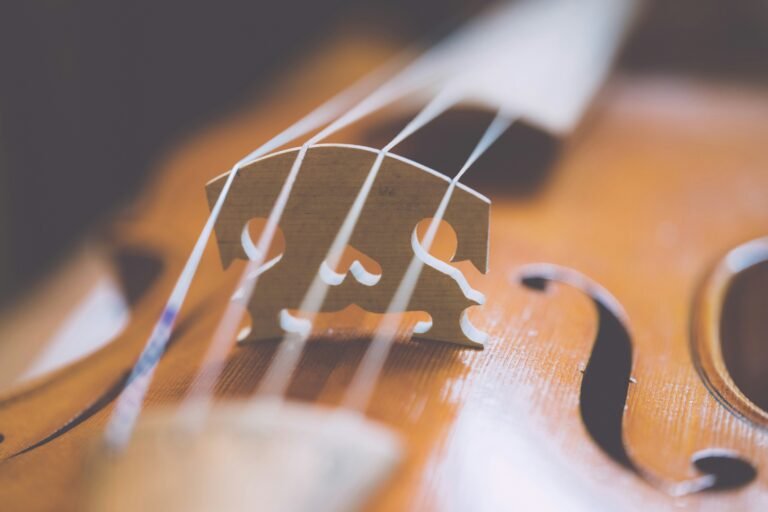Getting Equipped for Baroque Violin Playing: An Amateur’s Guide to Baroque Gear
If you’ve started exploring Baroque violin playing, you might be wondering whether your modern setup is sufficient, if it’s time to invest in a Baroque bow or even a period-style instrument. Maybe you’ve experimented with gut strings, or you are already playing in a Baroque ensemble and looking for an instrument that will blend in with your group and give you a more baroque sound.
When I first started playing in a Baroque ensemble, I started with a gut-strung modern violin and a cheap eBay bow. Even the very basic bow helped me achieve a different articulation and style more suitable for Baroque music. Since then, I’ve built up a modest collection of Baroque gear, and I’m here to help you get started exploring Baroque equipment as well.
What Makes a Violin “Baroque”?
A Baroque violin setup typically differs from a modern one in three ways:
- Strings: Gut strings (often unwound on the upper strings) produce a warmer, textured, and resonant tone.
- Bow: A Baroque bow is shorter, lighter, and curves outward offering a different feel and response.
- Setup: A shorter fingerboard, different bridge and tailpiece style, and often a different neck angle or wedge fingerboard. The bass bars inside Baroque instruments are often shorter than in modern instruments.A viola with a Baroque style bridge and gut strings
You don’t need a full Baroque setup to play Baroque music or explore historically informed performance styles! Many modern violinists start their HIP journey with a Baroque bow and gut strings while using their existing instrument.
Baroque Bows: Where to Start
A Baroque bow is possibly the most important piece of equipment to help you get the feeling of playing baroque music in a historically informed way. Its shape and weight dramatically improve your ability to execute baroque style articulation and phrasing.
If you’re just starting out, try a budget-friendly bow from a reputable shop like Shar Music, Givens Violins, or Vermont Violins. I’ve also bought a student-level baroque bow from Yita Music on eBay, but it came with a cracked frog so understand that you are taking a risk by going this route. Cheap bows can be fun to play around with, but the quality varies.
Also consider:
- Givens Violins – Carries both student and master-level Baroque bows.
- Perrin & Associates – Offers imported bows and fine handmade models.
- Lazar’s Early Music – Stocks Christopher English bows and student-level options.
- Terra Nova Violins – Stocks a variety of Baroque bows and instruments.
- Shar Music – Budget-friendly options for beginners or those just trying a baroque bow for the first time.
For master-made bows, look into archetiers like Christopher English, Andrew Dipper, H.F. Grabenstein, or Ralph Ashmead. Their bows are more of an investment, but they are finely made and a significant upgrade over mass produced student-grade baroque bows.

Finding a Baroque Violin or Viola
Conversion vs. Replica Instruments
If you love your current violin, you might consider a conversion, however know that a full conversion is not easily reversed and is a costly endeavor. A simple conversion involves replacing the bridge and tailpiece with Baroque-style ones. A more thorough conversion might include a wedge-shaped fingerboard or a neck reset. This should only be done by a luthier with Baroque experience and should be approached with caution.
I met Sarah Peck at the Berkeley Early Music Festival who specializes in historical instrument restorations. Local violin shops may be able to help with basic setup changes, but for more extensive work, seek out someone with period expertise.
If you prefer to keep your modern instrument as-is, look for a Baroque replica. Many luthiers build new Baroque violins or violas, and may not be priced much higher than the cost of a full baroque conversion by an experienced luthier. A growing number of violin shops carry baroque Chinese workshop instruments that can be a more cost effective way to start playing on a baroque setup. If you have the opportunity to attend an early music festival with an instrument exhibition, this is a great way to meet makers and try a variety of instruments in one place.
Recommendations
Jay Haide instruments, made by Ifshin Violins, are among the most popular student-level Baroque replicas. I play a Jay Haide Baroque viola and a Charlie Ogle baroque violin.
Other budget-friendly makers include:
- Lu-Mi Instruments (available from The Early Music Shop and Lazar’s Early Music)
- Charlie Ogle Instruments (often sold at exhibitions or through Boulder Early Music Shop)
- Iesta Strings (available through Terra Nova Violins)
A Selection of Shops That Carry Baroque instruments:
- Ifshin Violins
- Johnson String Instrument
- Terra Nova Violins
- Lazar’s Early Music
- Givens Violins
- LaMotte Violins
- The Early Music Shop (UK)
Gut Strings: What to Buy and Where to Get Them
My first gut strings were Pirastro Chorda, and while they were accessible, they weren’t my favorite, especially the fragile E string. These days, I primarily use Gamut Music strings. They offer great resonance and hold up well. Keep an eye out for their seasonal sales.
Other reputable brands:
- Aquila – I haven’t tried them yet, but many Baroque players love them.
- Toro and Kürschner – More common in Europe.
- Pirastro Eudoxa or Oliv – Great wound gut options for the lower strings That are easily available at most shops.
Where to buy gut strings:
Buying Used
Shops are able to charge more than individual sellers, but you’re paying for convenience, setup, and often a trade-in policy. That being said, there are some gems to be found secondhand, especially if you know what you’re looking for and where to look.
Try these sources for used Baroque gear:
- Early Music America classifieds
- Early Instruments for Sale in North America Facebook Group
- Reverb (for bows and instruments)
- eBay – Use with caution as sellers often use eBay as a last resort!
Always ask questions about condition, setup, and repairs. Photos can be misleading, so don’t hesitate to request additional pictures. Buying online without the ability to try is always risky.
Final Thoughts
Getting started with Baroque equipment doesn’t have to be overwhelming. Start with a bow, try some gut strings, try some instruments at a shop, and continue exploring. Attend festivals, ask questions, and if possible, try gear before you buy. I’ve enjoyed slowly building up my Baroque setup over time. It’s been a fun part of my musical journey and I’ve learned a bit about instruments, bows, and setup along the way.
💬 If you’ve been exploring Baroque equipment and playing, I’d love to hear what you’re using and how you found it. Leave a comment to share your own experiences!
🎻Want more tips on Baroque violin playing, gear, and finding your voice as an amateur string player? Subscribe to Tuning in Fifths and join the journey.



